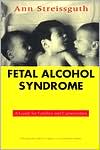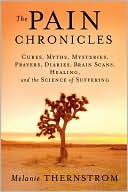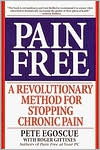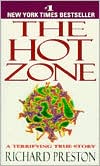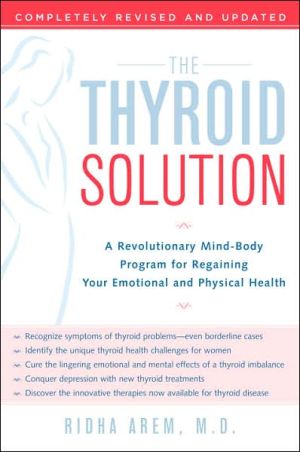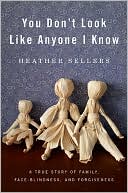Fetal Alcohol Syndrome: A Guide for Families and Communities
In 1973, psychologist Ann Streissguth was shocked by the lack of scientific documentation on the impact of alcohol on the unborn child. She sought to fill that void by dedicating her professional career to the study of fetal alcohol syndrome FAS and fetal alcohol effects FAE. In this compassionate volume, Dr. Streissguth draws on her life's work, writing with wisdom and authority on essential issues surrounding these alcohol-related problems. Using compelling case studies, photos,...
Search in google:
In 1973, psychologist Ann Streissguth was shocked by the lack of scientific documentation on the impact of alcohol on the unborn child. She sought to fill that void by dedicating her professional career to the study of fetal alcohol syndrome (FAS) and fetal alcohol effects (FAE). In this compassionate volume, Dr. Streissguth draws on her life's work, writing with wisdom and authority on essential issues surrounding these alcohol-related problems. Using compelling case studies, photos, illustrations, and validated empirical research, the author highlights the cultural, racial, and economic diversity of FAS. A completely preventable disability, FAS still changes the life course of thousands of babies each year. This book will help physicians, psychologists, social workers, educators, advocates, and families of children and adults with FAS work toward an educated community, a supportive network of legislation and programs, and better futures for people living and growing with FAS. Luther K. Robinson This is a concise guide to better understanding the issues surrounding recognition and management of fetal alcohol syndrome (FAS). Although targeted toward families affected by FAS, it is equally valuable reading for those who provide care in the professional setting. The book was written to be a "vehicle for parents and professionals to use in working together to help children with FAS/FAE." In addition, this work is a valuable reference for active investigators who have limited time or access to the large, diverse body of knowledge concerning FAS. By placing information from multiple disciplines into a single, readable source, the author has given us a work that truly enhances our appreciation of the need for and effectiveness of the transdisciplinary model. The author's foreword indicates that her audience is "parents and professionals to use in working together." This book effectively reaches its target audience, providing current information and thought provoking insights for physicians, nurses, teachers, therapists, and advocates -- anyone who is actively involved in the care of persons with FAS/FAE. A coauthor on the seminal paper on FAS, the author is an internationally recognized investigator who has studied FAS for the past 25 years. Although much of her research has focussed on FAS among Native Americans, the information contained in this book is applicable to various populations. The book is visually appealing and contains a good balance between data derived from the basic and applied sciences. Each chapter begins with an anecdote concerning an experience of an individual living with the impact of FAS. These serve as the focal point around which the chapter'sresearch and diagnostic and management issues are addressed. Each chapter is well annotated with citations that range from antiquity (e.g., the Scriptures) to the present, and even includes untranslated references, giving the interested reader a large body of information for further perusal. This is an excellent work. The author has compiled a concise, comprehensive treatment of FAS ranging from its history to diagnosis and management. The book is empathically yet quantitatively written and exposes the reader not only to "common sense" issues surrounding FAS, but also to data that provide the basis for one's approach to care. It provides content with context. In my own work with families and other professionals involved with FAS, I found this book to be extremely useful for its breadth and depth of coverage of the topic. This book is a must for the libraries of individuals who care for persons with birth or developmental disabilities. It should be among the reference materials of physicians, social workers, educators, community advocates, and support groups. Equally important, it should find its way into the libraries of institutions that train the next generation of professionals.
List of Tables and FiguresList of PhotographsAbout the AuthorForewordForewordPrefaceAcknowledgments1Overview of Fetal Alcohol Syndrome32Diagnosing Fetal Alcohol Syndrome173From Awareness to Public Policy354Alcohol as a Teratogen555Alcohol's Impact on Children716Primary and Secondary Disabilities957Living with Fetal Alcohol Syndrome1198The Advocacy Model1459Families Speak Out16510Preparing Children with FAS/FAE for Adulthood18511Guidelines for Schools20712Guidelines for Human Services22713Education, Training, and Public Policy24914Effective Prevention Programs for High-Risk Mothers263Epilogue279Resource Appendix281Permissions291Index293
\ From The CriticsReviewer: Luther K. Robinson, MD(SUNY at Buffalo School of Medicine)\ Description: This is a concise guide to better understanding the issues surrounding recognition and management of fetal alcohol syndrome (FAS). Although targeted toward families affected by FAS, it is equally valuable reading for those who provide care in the professional setting.\ Purpose: The book was written to be a "vehicle for parents and professionals to use in working together to help children with FAS/FAE." In addition, this work is a valuable reference for active investigators who have limited time or access to the large, diverse body of knowledge concerning FAS. By placing information from multiple disciplines into a single, readable source, the author has given us a work that truly enhances our appreciation of the need for and effectiveness of the transdisciplinary model.\ Audience: The author's foreword indicates that her audience is "parents and professionals to use in working together." This book effectively reaches its target audience, providing current information and thought provoking insights for physicians, nurses, teachers, therapists, and advocates — anyone who is actively involved in the care of persons with FAS/FAE. A coauthor on the seminal paper on FAS, the author is an internationally recognized investigator who has studied FAS for the past 25 years. Although much of her research has focussed on FAS among Native Americans, the information contained in this book is applicable to various populations.\ Features: The book is visually appealing and contains a good balance between data derived from the basic and applied sciences. Each chapter begins with an anecdote concerning an experience of an individual living with the impact of FAS. These serve as the focal point around which the chapter's research and diagnostic and management issues are addressed. Each chapter is well annotated with citations that range from antiquity (e.g., the Scriptures) to the present, and even includes untranslated references, giving the interested reader a large body of information for further perusal.\ Assessment: This is an excellent work. The author has compiled a concise, comprehensive treatment of FAS ranging from its history to diagnosis and management. The book is empathically yet quantitatively written and exposes the reader not only to "common sense" issues surrounding FAS, but also to data that provide the basis for one's approach to care. It provides content with context. In my own work with families and other professionals involved with FAS, I found this book to be extremely useful for its breadth and depth of coverage of the topic. This book is a must for the libraries of individuals who care for persons with birth or developmental disabilities. It should be among the reference materials of physicians, social workers, educators, community advocates, and support groups. Equally important, it should find its way into the libraries of institutions that train the next generation of professionals.\ \ \ \ \ Luther K. RobinsonThis is a concise guide to better understanding the issues surrounding recognition and management of fetal alcohol syndrome (FAS). Although targeted toward families affected by FAS, it is equally valuable reading for those who provide care in the professional setting. The book was written to be a "vehicle for parents and professionals to use in working together to help children with FAS/FAE." In addition, this work is a valuable reference for active investigators who have limited time or access to the large, diverse body of knowledge concerning FAS. By placing information from multiple disciplines into a single, readable source, the author has given us a work that truly enhances our appreciation of the need for and effectiveness of the transdisciplinary model. The author's foreword indicates that her audience is "parents and professionals to use in working together." This book effectively reaches its target audience, providing current information and thought provoking insights for physicians, nurses, teachers, therapists, and advocates -- anyone who is actively involved in the care of persons with FAS/FAE. A coauthor on the seminal paper on FAS, the author is an internationally recognized investigator who has studied FAS for the past 25 years. Although much of her research has focussed on FAS among Native Americans, the information contained in this book is applicable to various populations. The book is visually appealing and contains a good balance between data derived from the basic and applied sciences. Each chapter begins with an anecdote concerning an experience of an individual living with the impact of FAS. These serve as the focal point around which the chapter'sresearch and diagnostic and management issues are addressed. Each chapter is well annotated with citations that range from antiquity (e.g., the Scriptures) to the present, and even includes untranslated references, giving the interested reader a large body of information for further perusal. This is an excellent work. The author has compiled a concise, comprehensive treatment of FAS ranging from its history to diagnosis and management. The book is empathically yet quantitatively written and exposes the reader not only to "common sense" issues surrounding FAS, but also to data that provide the basis for one's approach to care. It provides content with context. In my own work with families and other professionals involved with FAS, I found this book to be extremely useful for its breadth and depth of coverage of the topic. This book is a must for the libraries of individuals who care for persons with birth or developmental disabilities. It should be among the reference materials of physicians, social workers, educators, community advocates, and support groups. Equally important, it should find its way into the libraries of institutions that train the next generation of professionals.\ \ \ BooknewsIn this book for parents and professionals who work to help children with fetal alcohol syndrome and effects FAS/FAE, Streissguth psychiatry and behavioral science, U. of Washington offers an overview of the condition, and discusses the diagnostic process, research conducted since the syndrome was first recognized in 1973, and strategies for prevention. Her suggestions for helping those with FAS/FAE focus on needs across the life-span and on the advocacy model for helping. She includes a resource list. Annotation c. by Book News, Inc., Portland, Or.\ \ \ \ \ 5 Stars! from Doody\ \
